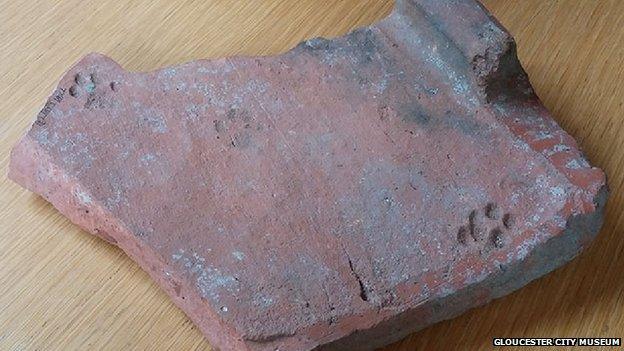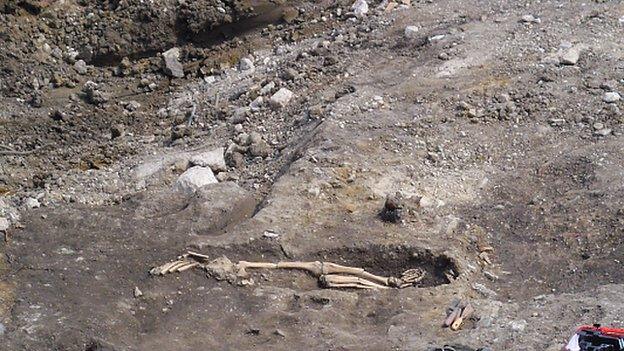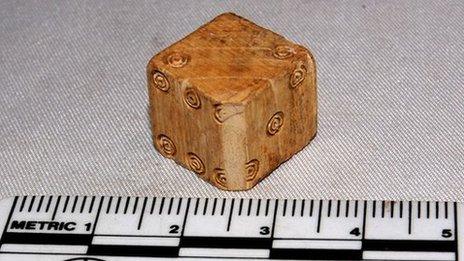Cat paw print discovered on Gloucester Roman roof tile
- Published

The paw print is thought to have been made in about AD100
A paw print made by a cat in Roman times has been discovered on a 2,000 year old roof tile in Gloucester.
It was dug up in Berkeley Street in 1969 but the footprint has only just been discovered.
The print was found by an archaeologist at Gloucester City Museum who was examining thousands of fragments of Roman roof tile.
The cat is thought to have snuck across the wet tiles which were drying in the sun in about AD100.
The tile, a type called tegula, was used on the roof of a building in what became the Berkeley Street area of modern Gloucester, a spokesman said.
Councillor Lise Noakes, from Gloucester City Council, said it was a "fascinating discovery".
"Dog paw prints, people's boot prints and even a piglet's trotter print have all been found on tiles from Roman Gloucester, but cat prints are very rare," she said.
- Published31 July 2013

- Published24 September 2012
